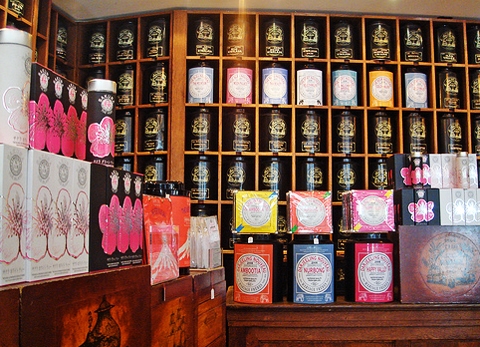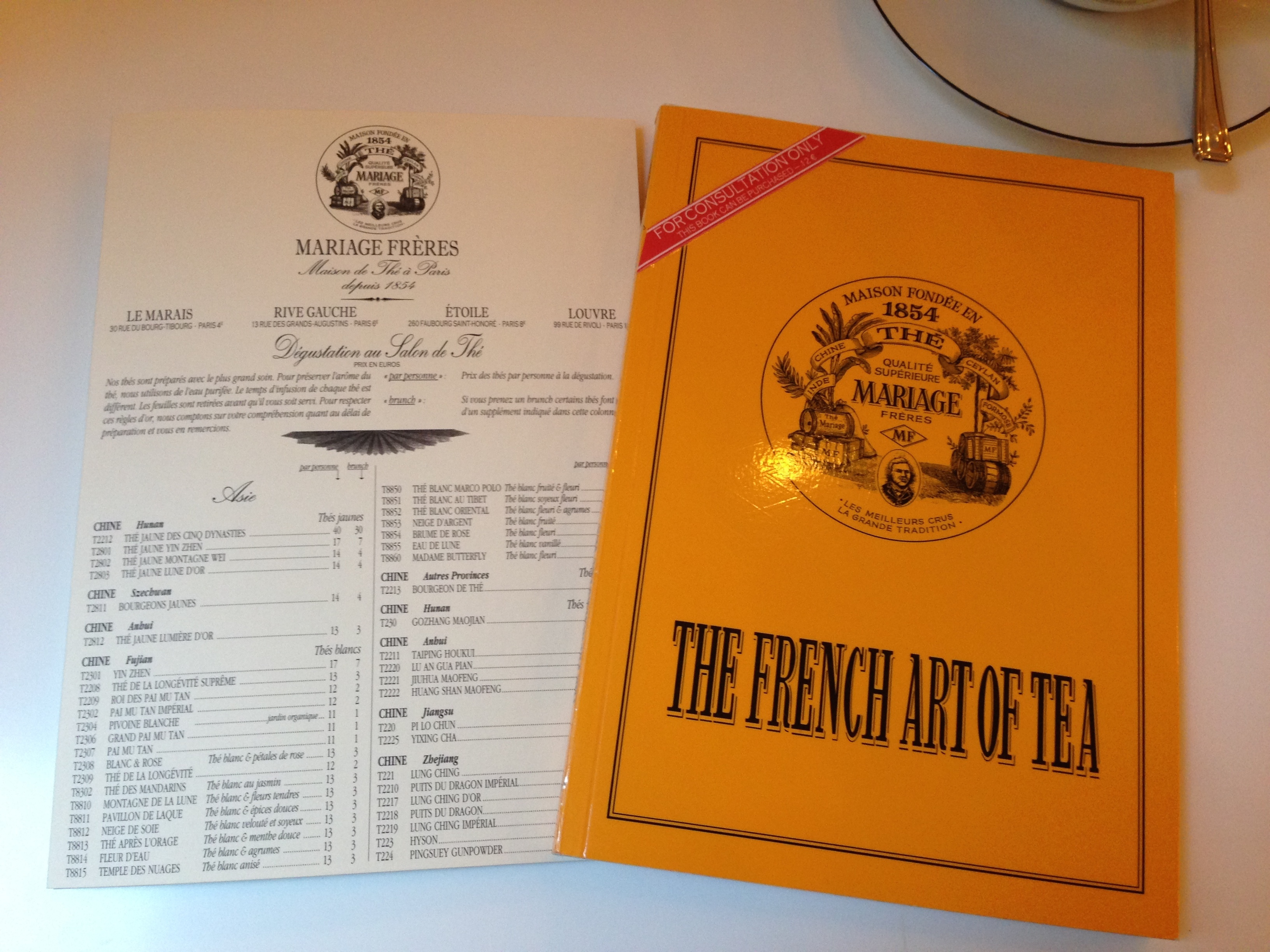Tea Culture in Paris

Tea, and the culture that surrounds it, is an art. Its reputation as a healing and relaxing substance has endured for centuries.
Here in Paris, a city famous for its café terraces, tea too is a vital part of the city's culture of leisure. While the British are more famous as tea drinkers, it seems the French actually discovered tea earlier. It's said that Cardinal Mazarin was drinking tea as early as 1639 to treat his gout. Tea wasn't wasn’t always accessible to the general public, but after its popularity with the bourgeoisie faded it started trickling into the homes of common people in the 19th century.
It was not considered an integral part of daily life in France until companies such as Mariage Frères sold tea to hotels and other venues, boosting its popularity with French consumers. Teahouses — known in French as a salons de thé — surfaced as a place for people to congregate and enjoy each other’s company, not unlike any modern café.
Today, there are a myriad ways to enjoy tea in the City of Light — and many articles have been written about the best Parisian tea salons. You can drink tea in a standard Parisian café, though the experience is quite different from the more refined ambiance of a Paris tea house — and those distinctions impact its drinkers in different ways. But tea salons offer an experience to be absorbed fully. In a tea salon, you don't stare at your smartphone and flip through your Facebook feed.
I decided to embark on a tea journey of my own in order to acclimate myself with France’s deep appreciation for the beloved beverage that is, in many ways, on the same caliber as wine.
Image Credit: Asia Letlow
On a typically dreary winter day in Paris, I went to the Mariage Frères tea salon in the cobbled market street, rue Cler. This was a date with class so I was dressed in my best tea-drinking attire. In an awkward attempt to enter what was the exit, I hastened through the other door. Immediately, I was enamored of the ambiance in what was a veritable tea museum, with tins lined along the wall. My initial embarrassment turned into awe.
“Bonjour,” said a man who led me to a seat by the window. Inspecting the carte, there were so many teas to choose from. After several minutes of deliberation and taking pictures and notes like a sociologist, I resolved to get Paris-Kyoto, a white tea with notes of vanilla and fruit.
Notes of opera and Ella Fitzgerald floated through the room in the background as I absorbed the atmosphere. The server brought out my tea, pouring the honorary cup. “Bonne degustation,” he said.
I took the first sip without sugar. When I added it in, I watched the stubborn crystals resist melting and looked around at the four quiet French women on either side of me, dressed considerably more casually than casual my eager self. I coached myself to go slowly, as French tea is not meant to be gulped senselessly, as Natasha Nesic, blogger and creator of Snooty Tea Time, suggests.
“It’s not there so you can chug it and then wonder where the hell your afternoon is gonna go,” she advised.
I went slowly but somehow drank four cups, immediately feeling like a greedy American. I suppose my New York dispositions have not been put aside. After several minutes of attempting to flag down a server for the check, his gaze met mine.
“Madame?”
“Monsieur?” I responded. He gave me the check, a modest €11. “Au revoir,” I said to him on the way out. I felt classy, with the remnants of refined tea on my tongue.
A second Parisian tea experience, this one to the eighteenth arrondissement, took me to a modern takeaway tea café called Amorino. The woman behind the counter greeted my with the standard “bonjour” and I paused before activating my French tongue. I asked for thé noir and watched as she retrieved the tea bag from the box. I took it and the plastic spoon with the complimentary pirouline and pod of sugar to sit down.
There was no one except me until a couple walked in. Outlets lined the walls, indicating that patrons did more than just talk; they worked, they read, they checked their email. Modern as it may have been, it was elegant in its own way and served its purpose; to allow for freer, less formalized leisure.
In the vast world of Parisian tea culture, there are salons and there are cafés; each caters to the mood of its patrons. One provides a spectacle of the rich evolution of tea culture while the other accommodates the changing landscape of leisure, embracing modernity.








